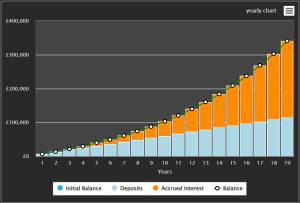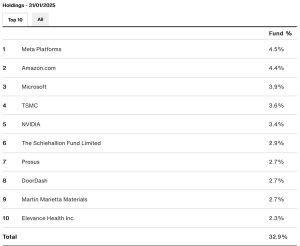In 2023, FTSE firm Phoenix Group Holdings (LSE: PHNX) paid a total dividend of 52.65p. On the current share price of £5.31, this gives a yield of 9.9%.
This is more than double the present FTSE 100 average yield of 3.6% and triple the FTSE 250’s 3.3%.
The high payout is not a fluke, as it has been paying increasingly large dividends over the past few years.
Working back four years from 2022, it paid 50.8p, 48.9p, 47.5p, and 46.8p. These provided respective yields at the time of 8.3%, 7.4%, 6.8%, and 6.2%.
Analysts’ forecasts are for these payouts to continue to rise. For 2024, projections are for 53.3p, with 54p expected in 2025, and 55.7p in 2026.
These dividends would yield 10%, 10.2%, and 10.5% on the current share price.
Can the high dividends be maintained?
In its 2023 results report, CEO Andy Briggs said £1.4bn in expected operating cash generation by end-2026 will “more than cover a growing dividend”.
He added that the excess cash will be used to support further investment into the business and/or additional shareholder rewards.
It certainly looks in a great position to do this, in my view. The company operates some of the biggest brands in the UK’s insurance business, including Standard Life. It is also its largest long-term savings and retirement business, with £283bn of assets under administration and 12 million customers.
A risk in the stock is a resurgence in the cost-of-living crisis that may prompt customers to cancel policies. Another is poor hedging of its capital position, as has occurred before. This hedging involves trading other assets with the intention of reducing the risk of adverse market movements on its capital.
However, consensus analysts’ expectations are for earnings to grow 38.9% a year to the end of 2026. Earnings per share are forecast to increase by 52.5% a year to that point.
Big passive income returns
I like to think of passive income as money made even while I sleep, with shares being a prime example. Money can be made when they rise in price and/or when they pay dividends.
So £10,000 for example invested in Phoenix Group shares yielding 9.9% would make me £990 in the first year.
If that money was taken out of the investment account and spent, I would make another £990 the following year. After 10 years of doing this at an average yield of 9.9%, I would have made an extra £9,900.
Crucially though, if I bought more Phoenix Group shares with the dividends then I would make much more. This is known as ‘dividend compounding’.
Doing this would make me an additional £14,514 after 10 years instead of £9,900, on an average 9.9% yield. So, my investment pot would be worth £24,514, and pay £2,427 a year in dividends, or £202 a month.
After 30 years on the same basis, it would be worth £147,306, paying me £14,583 a year, or £1,215 each month!
None of that is guaranteed, of course, and I could lose out in terms of share price falls and any cuts to the dividend.
But given the high growth prospects and terrific yield, the shares looked too good to miss when I first bought them. Nothing has changed for me, so I will be adding to my holding shortly.
This post was originally published on Motley Fool







